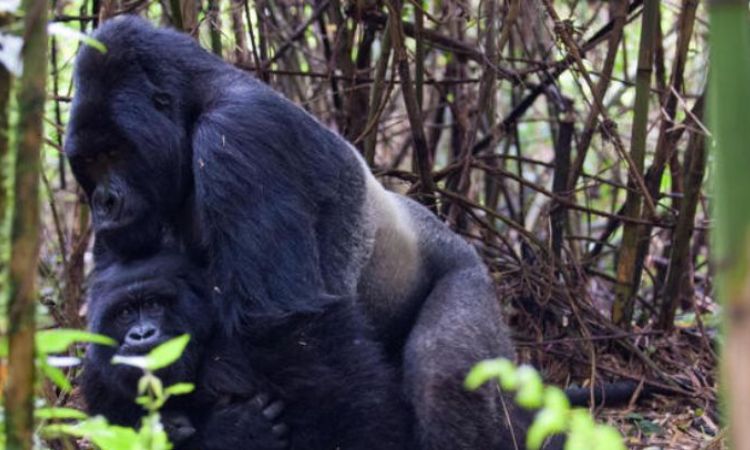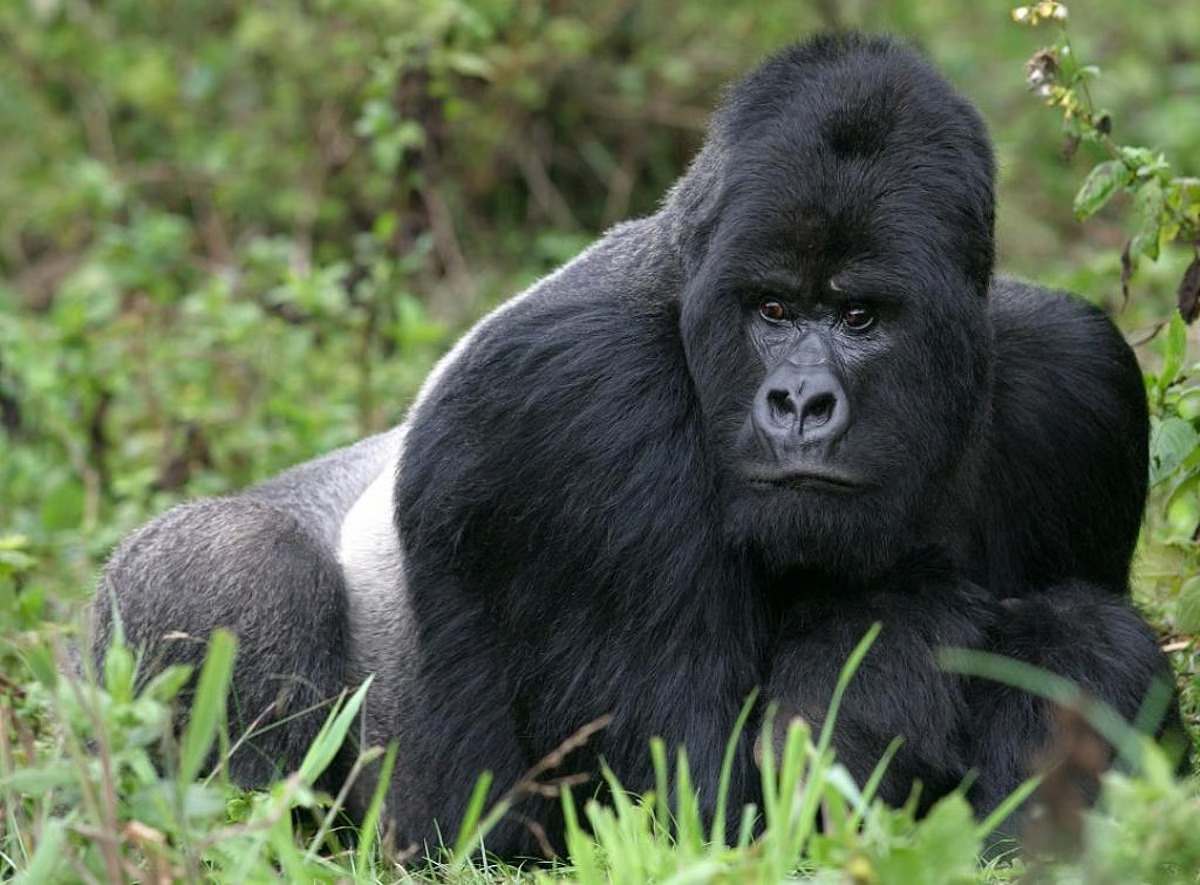Do Gorillas Mate with Humans: A Fascinating Insight – Top Facts
Do Gorillas Mate with Humans: Learn the scientific truth about whether gorillas can mate with humans. Discover gorilla mating behavior, DNA facts, and conservation efforts in Uganda.
The question “Do gorillas mate with humans?” sparks curiosity and intrigue, often driven by myths, misconceptions, or sheer wonder about our closest primate relatives.
While humans and gorillas share an astonishing 98% of their DNA, the possibility of interbreeding is biologically impossible.
This guide dives into the genetic, biological, and behavioral reasons why humans and gorillas cannot mate, explores gorilla mating habits in the wild, and highlights the importance of conservation efforts to protect these incredible creatures.
Genetic Differences Between Humans and Gorillas
Humans and gorillas are genetically close, sharing approximately 98% of their DNA. This similarity reflects our shared evolutionary ancestry, dating back to a common ancestor roughly 8–10 million years ago.
However, genetic similarity does not equate to reproductive compatibility. One key barrier is the difference in chromosome numbers: humans have 46 chromosomes (23 pairs), while gorillas have 48 chromosomes (24 pairs).
This mismatch prevents successful fertilization, as chromosomes must align properly during cell division to produce viable offspring.
Additionally, the structure of DNA and the specific genes involved in reproduction differ significantly. Sperm and egg cells from humans and gorillas are incompatible due to variations in protein structures and genetic coding.
Even if mating were attempted, the gametes (sperm and egg) would not recognize each other, making conception impossible.
These genetic barriers are reinforced by millions of years of evolutionary divergence, ensuring that humans and gorillas remain distinct species.
Comparison of Chromosome Numbers Among Great Apes
|
Species |
Chromosome Count |
|
Human |
46 (23 pairs) |
|
Gorilla |
48 (24 pairs) |
|
Chimpanzee |
48 (24 pairs) |
|
Orangutan |
48 (24 pairs) |
This table highlights the chromosomal differences that prevent interbreeding, even among closely related primates.

Why Humans and Gorillas Cannot Mate
Beyond chromosomal differences, several biological and behavioral barriers make human-gorilla mating impossible. These include:
- Sperm and Egg Incompatibility: The molecular structure of human and gorilla gametes prevents fertilization. Specific proteins on the surface of sperm and eggs must match for conception to occur, and these proteins are species-specific.
- Reproductive Cycle Differences: Female gorillas have a menstrual cycle of about 30–33 days, similar to humans, but their hormonal systems differ significantly. Ovulation triggers and mating cues are tailored to gorilla physiology, not human biology.
- Anatomical Differences: While humans and gorillas share some anatomical similarities, their genital structures are adapted to their respective species. These differences further reduce the likelihood of successful mating.
- Behavioral Barriers: Gorillas rely on complex social and instinctual cues for mating, such as displays of dominance by silverback males or subtle body language from females. Humans do not exhibit these behaviors, making them unrecognizable as mates to gorillas.
- Ethical and Moral Barriers: Modern science and ethical guidelines strictly prohibit any experimentation involving human-animal mating. Such actions would be considered unethical and illegal.
Even if physical mating were to occur, conception would be impossible due to these insurmountable barriers. The notion of a human-gorilla hybrid is purely fictional and unsupported by science.
How Gorillas Mate in the Wild
Gorilla mating behavior is fascinating and highly structured, taking place within tightly knit family groups led by a dominant silverback male.
In the wild, gorillas live in troops of 5–30 individuals, with one or occasionally two silverbacks overseeing the group. The silverback has exclusive mating rights with the females in his troop, ensuring his genes are passed on.
Female gorillas signal their readiness to mate through subtle body language, such as prolonged eye contact, specific postures, or physical proximity to the silverback.
Mating itself is brief, lasting only a few seconds, and typically occurs when the female is in estrus (the fertile phase of her cycle).
Unlike humans, gorillas do not have a specific mating season and can reproduce year-round, though mating frequency depends on the female’s reproductive cycle and the social dynamics of the troop.
The silverback’s role extends beyond mating. He protects the troop from threats, including rival males, and maintains order within the group.
If a new silverback takes over a troop, he may kill the offspring of the previous male to bring the females back into estrus—a behavior known as infanticide, which ensures his own genetic legacy.
Gorilla Reproduction and Family Structure
Gorilla reproduction is a slow and careful process, reflecting the species’ low reproductive rate. After mating, a female gorilla’s gestation period lasts approximately 8.5 months, resulting in the birth of a single infant.
Twins are extremely rare. Newborn gorillas weigh about 4 pounds and are entirely dependent on their mothers for survival.
Mother gorillas are highly nurturing, carrying their infants for the first few months and nursing them for up to three years. The bond between mother and baby is strong, with the infant remaining close to its mother for 3–4 years as it learns essential survival skills. The silverback also plays a protective role, defending the infant from predators or rival males.
Gorilla families are tight-knit, with complex social structures that promote group cohesion. Young gorillas learn social behaviors by observing adults, and females often stay with their natal group or transfer to another troop upon reaching maturity. This social system ensures the survival of the species in the wild, despite challenges like habitat loss and poaching.
Human vs. Gorilla Evolution
Humans and gorillas share a common ancestor that lived 8–10 million years ago, a fact reflected in our close genetic similarity. However, evolution has taken us down different paths.
Humans (Homo sapiens) evolved advanced cognitive abilities, speech, and bipedal locomotion, while gorillas (Gorilla gorilla and Gorilla beringei) developed physical strength, quadrupedal movement, and complex social behaviors suited to their forest habitats.
The divergence began when our ancestors split from the lineage that led to modern gorillas and chimpanzees. Over millions of years, genetic mutations and environmental pressures shaped humans into a species adapted for tool use, language, and global colonization. Gorillas, meanwhile, became specialized for life in dense forests, with robust builds and herbivorous diets.
This evolutionary divergence explains why interbreeding is no longer possible. The genetic, anatomical, and behavioral differences accumulated over millions of years create a reproductive barrier that cannot be crossed. Instead of focusing on fictional hybrids, we should appreciate the remarkable similarities that highlight our shared heritage.

Debunking Myths and Misconceptions
The idea of humans mating with gorillas often stems from internet myths, sensationalized media, or fictional stories. There is no scientific evidence or verified case of a human-gorilla hybrid, and biology makes such a scenario impossible. Claims about crossbreeding are typically rooted in misunderstanding or deliberate misinformation.
For example, some online stories reference unethical experiments or fictional creatures like “Bigfoot” as evidence of human-ape hybrids.
These are not grounded in reality. Modern science adheres to strict ethical standards, and no reputable institution would attempt such experiments.
The fascination with human-gorilla mating is better directed toward understanding the real behaviors and biology of these incredible animals.
Gorilla Conservation and Human Responsibility
Rather than dwelling on myths, we should focus on protecting gorillas, which are critically endangered due to habitat loss, poaching, and disease.
Mountain gorillas, found in Uganda, Rwanda, and the Democratic Republic of Congo, have seen population recovery thanks to dedicated conservation efforts, but their numbers remain low, with fewer than 1,100 individuals left in the wild.
Conservation programs, such as those in Uganda’s Bwindi Impenetrable Forest and Rwanda’s Volcanoes National Park, involve habitat protection, anti-poaching patrols, and community education.
Tourism, particularly gorilla trekking, provides funding for these efforts while raising awareness about the species’ plight.
Humans have a responsibility to protect our closest relatives. By supporting conservation initiatives, we can ensure that future generations can witness the beauty and intelligence of gorillas in their natural habitats. Learn more about gorilla conservation in Uganda with Gorilla Nests Safaris.
Frequently Asked Questions
Can a human get a gorilla pregnant?
No, it is biologically impossible due to genetic, chromosomal, and reproductive barriers.
How close is human DNA to gorillas?
Humans and gorillas share about 98% of their DNA, reflecting a shared evolutionary ancestor.
Do gorillas have mating seasons?
Gorillas can mate year-round, as they do not have a specific mating season.
How do gorillas attract mates?
Females use subtle body language, such as eye contact and posture, while silverbacks display dominance to attract mates.
Conclusion: Appreciate Gorillas in Their Natural Glory
While the question “Do gorillas mate with humans?” captures curiosity, science clearly shows that interbreeding is impossible due to genetic, biological, and behavioral barriers.
Instead of chasing myths, we should marvel at the incredible similarities between humans and gorillas and focus on understanding their natural behaviors and social structures.
To truly appreciate these magnificent primates, consider joining a gorilla trekking tour in Uganda with Gorilla Nests Safaris. Witness the power, gentleness, and intelligence of gorillas in their natural habitat—an experience that will leave you in awe of our closest relatives. Book your life-changing gorilla adventure today!
Learn the scientific truth about whether gorillas can mate with humans. Discover gorilla mating behavior, DNA facts, and conservation efforts in Uganda.